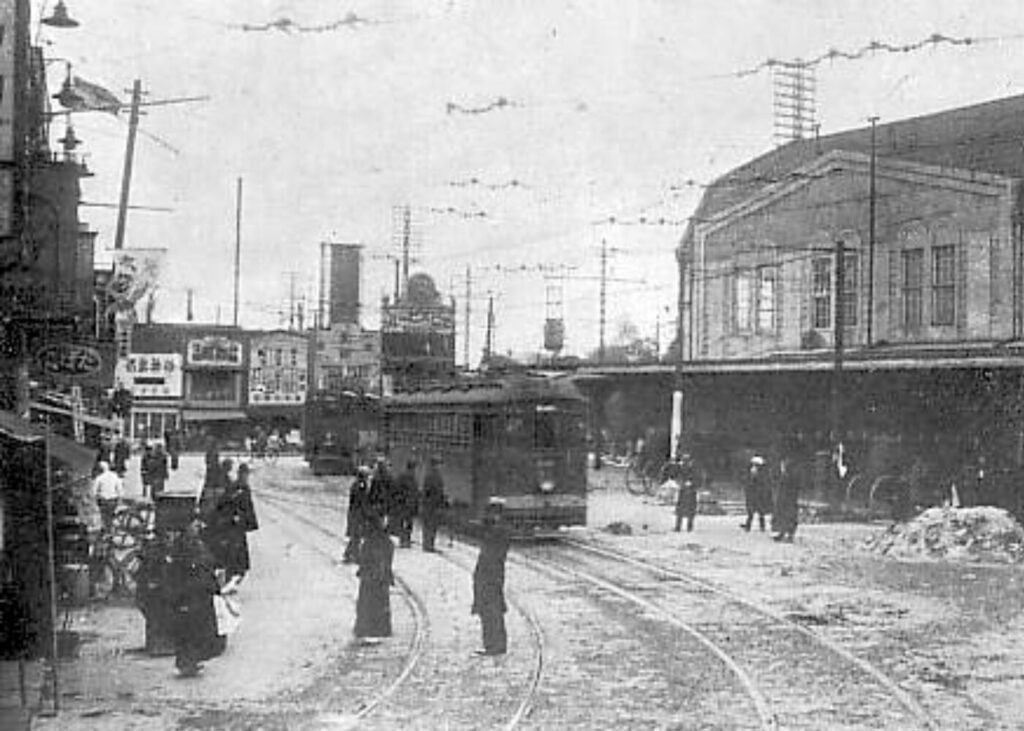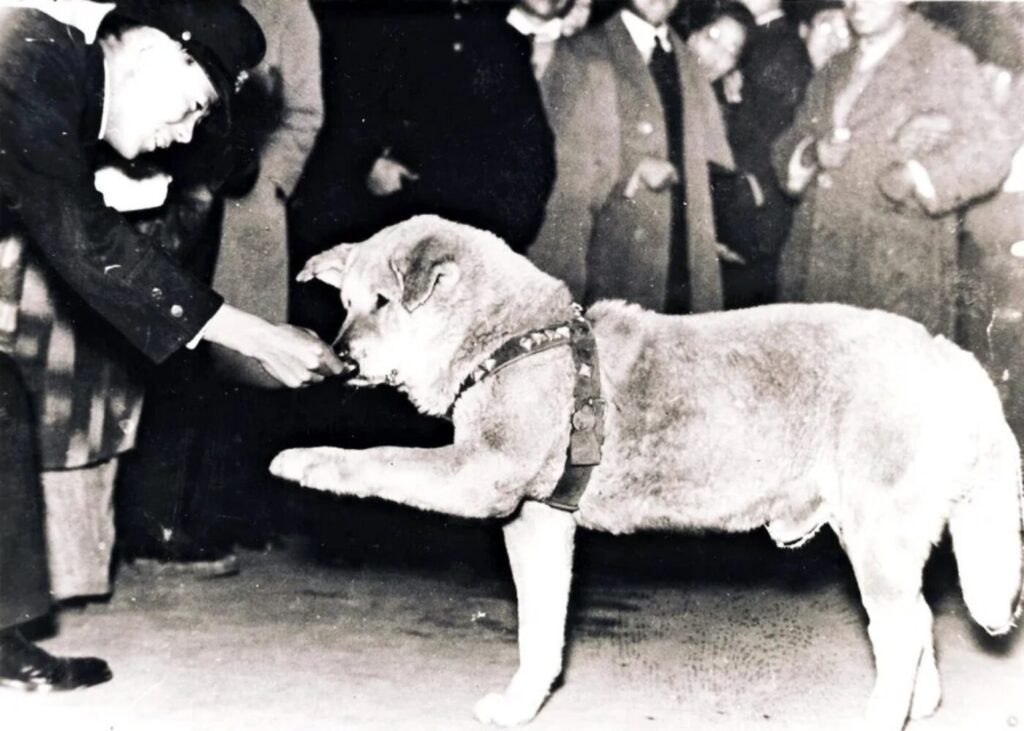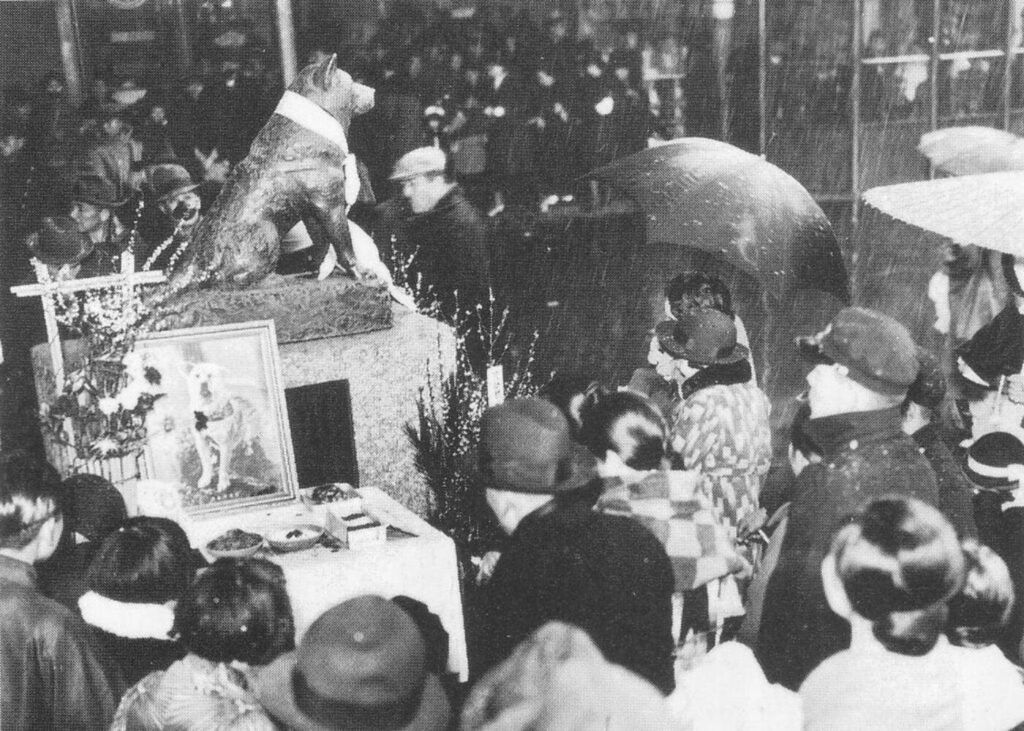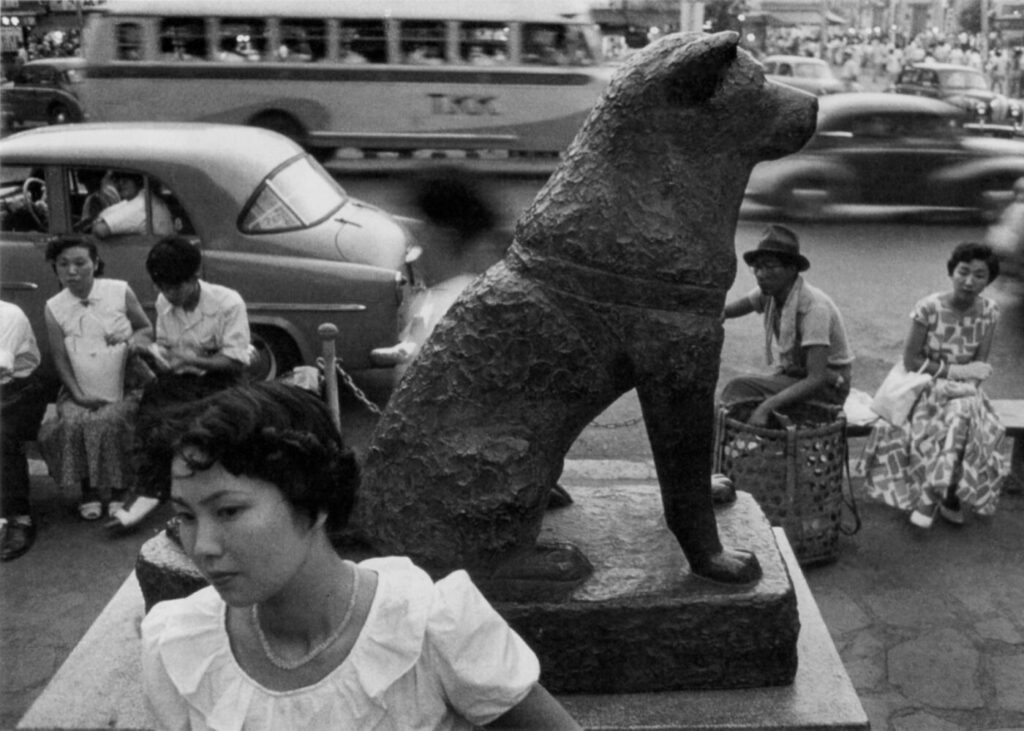If you are planning a trip to Japan and visit Shibuya Station in Tokyo, you will probably see a bronze statue of a dog in front of the station. This dog is called Hachiko and is very famous in Japan. But why is there a dog statue in front of such a busy station? Knowing why gives us an insight into Japanese culture and the hearts and minds of its people.
This article tells the inspiring story of Hachiko and explains its background in a simple way. Even if you know nothing about Japan, you will enjoy it and find it useful at all times. We will then unveil together the secrets of how Hachiko became the symbol of Shibuya.
1. Hachiko and his owner

Hachiko’s story begins almost 100 years ago, in Tokyo in the 1920s. At that time, Dr. Eizaburo Ueno, a professor at Tokyo Imperial University (now Tokyo University), had a dog named Hachi, a Japanese breed called Akita Inu. Hachi used to accompany Dr. Ueno to Shibuya Station every day and wait for him to return in the evening. However, on May 21, 1925, Dr. Ueno died suddenly at the university. Hachi was unaware and waited at Shibuya Station as usual. From that day on, Hachi’s life changed drastically and the story that would eventually become known throughout Japan began.
2. After the death of his owner

After Dr. Ueno’s death, Hachi was taken in by another family from the Ueno family. However, Hachi did not fit into his new home and ran away many times, returning to Shibuya Station. Every day, Hachi would wait for Dr. Ueno at the station, which became a topic of conversation among station staff and neighbors. People, moved by Hachi’s loyalty and how much he loved Dr. Ueno, began to feature him in newspapers and on the radio. In this way, Hachi’s story spread and became known to many Japanese.
3. Bronze statue of Hachi

As Hachi’s story becomes more and more famous, people begin to help him. Shopkeepers and staff at the station near Shibuya gave him food and blankets on cold days. People were so moved by Hachi’s story that they decided they wanted to pass on the dog’s loyalty to future generations, and began raising money to build a statue of him. In 1934, a bronze statue of Hachiko was completed in front of Shibuya Station. Surprisingly, Hachi himself attended the unveiling ceremony. Hachi was still alive at that time and was being cared for by the people next to the statue.
4. World War II

However, Hachiko’s story continued to be put to the test: in 1935, Hachi died after 11 years of waiting for Dr. Ueno. In addition, Japan then entered World War II. During the war, many statues were melted down by the military due to metal shortages. The Hachi statue was also removed in 1944 and was lost to the war effort. With Hachiko’s death and the loss of his statue, for a time Hachiko’s story was in danger of being forgotten.
5. Post-war

When the war ended and Japan began to rebuild, Hachiko’s story returned to the spotlight: in 1948, thanks to the efforts of many, a bronze statue of Hachiko was reconstructed and returned to the facade of Shibuya Station. The new statue has become a symbol of loyalty and affection and is beloved throughout Japan. Today, Hachiko’s story has been made into movies and books and is known around the world. For example, the 2009 Hollywood movie HACHI: The Promised Dog is a heartwarming film based on Hachiko’s story.
6. Nowadays
Descubre los lugares más interesantes de Tokio

Today, the Hachiko statue in front of Shibuya Station is a popular tourist attraction. It has become a place where every visitor to Japan goes to have his or her picture taken at least once. It is also a famous meeting point for locals, with many people promising to meet in front of Hachiko every day. Hachiko’s story is also taught in Japanese schools and has become an educational tool for learning about loyalty and kindness.
7. Conclusion
The story of Hachiko is not just about a dog and his owner. It is a symbol of people’s love, loyalty and kindness. The Hachiko statue in front of Shibuya Station is there for all of us to remember the important feelings the little dog taught us 100 years ago. If you visit Shibuya, you should definitely take a look at the Hachiko statue!
Descubre los lugares más interesantes de Tokio



